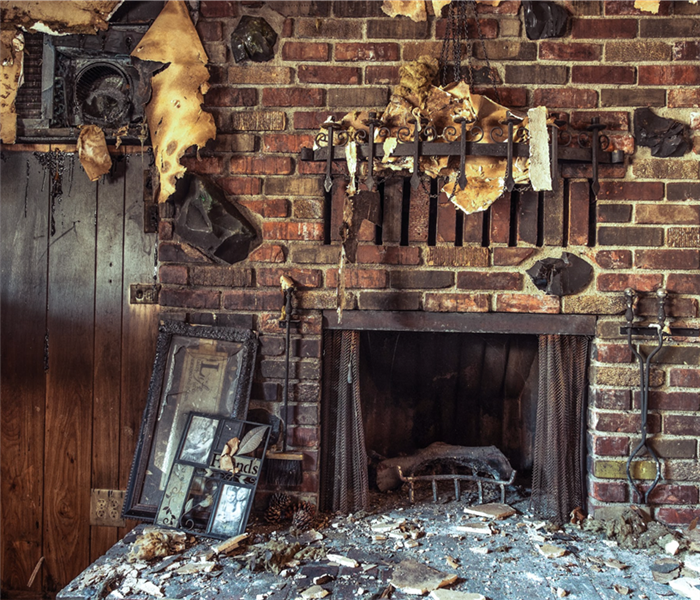How To Inspect a Fireplace
12/7/2022 (Permalink)
If you have a fireplace in your home, it is important to inspect it regularly. A chimney inspection will help you maintain the safety and effectiveness of your fireplace. Here’s how:
Inspect the Inside of Your Fireplace
First, inspect the hearth (the bottom surface where logs rest) and firebox (the area between them). If they're damaged or missing, they must be replaced before using your fireplace again.
Then, check for damage to stove pipe vents—they should not leak smoke from their joints when air pressure changes during operation.
Clean Out Ashes
It's important to remove ashes from your fireplace before they get too hot. To do so, you'll need to use a fireplace tool, which will help you scoop out any remaining ashes in the hearth.
If you don't have a fireplace tool, use a broom or dustpan instead. You should also check your chimney for blockages regularly (every two weeks) and remove them as needed: sticks, leaves, and other debris can get stuck in the flue and cause damage over time if left unchecked.
It's not recommended that vacuums be used on fireplaces because they can cause sparks which could lead to an accident with potentially serious consequences!
Check for Clearance Issues
Measure the distance between the fireplace wall and the floor. If there are less than 18 inches of clearance, you should consider moving your furniture or furnishings away from the fireplace to create more space. Then, measure the distance between the fireplace wall and any combustible materials such as curtains or hanging rugs that could catch fire if they come in contact with your flames. If there isn't at least 12 inches of clearance, move these objects away from where they might touch hot embers after you've burned a fire in your fireplace. You can also opt for safer alternatives—like vinyl window treatments—to help protect yourself against fires while still enjoying all of those beautiful natural light and heat benefits offered by a roaring fire!
Check for Creosote Buildup
Creosote is a by-product of combustion, so if you're properly burning your fireplace, it should be a rare sight. However, creosote can build up in the chimney over time and cause serious problems. If left unchecked, creosote can ignite and start a chimney fire; this is especially dangerous during the winter months when the temperature outside is below freezing.
If you think that there might be some buildup on the inside of your chimney (it's hard to tell without looking), take caution before lighting your next fire.
Creosote can also cause damage to other components of your fireplace system including flues and damper systems.
Check the Outside of Your Fireplace
Once you've inspected the inside of your fireplace, it's time to turn your attention to the outside. The first thing you should do is check for cracks in the mortar and bricks. If any are found, these need to be repaired before you can use your fireplace again.
Next, look at the flue and see if there are any cracks or holes that need attention.
Schedule a Chimney Inspection with a Professional
If you want to make sure your fireplace is working safely and efficiently, schedule a chimney inspection with a professional. Chimney sweeps are specially trained and experienced in the ins and outs of fireplaces, and they can be an invaluable resource when it comes to getting the most out of your fireplace. You should schedule an inspection every year if possible; if not possible due to lack of funds then at least once every five years would be ideal as well.
As you can see, chimney cleaning is an important part of fireplace maintenance. If you want your fireplace to stay safe and effective, it is important to regularly inspect it and schedule chimney cleanings.
If you want to keep your fireplace safe and functional, it is important to regularly inspect the outside of it. This will help you identify any issues before they become serious problems that require costly repairs and replacements. Give SERVPRO of Lafayette a call if you experience a fire in your Lafayette, LA home!




 24/7 Emergency Service
24/7 Emergency Service
